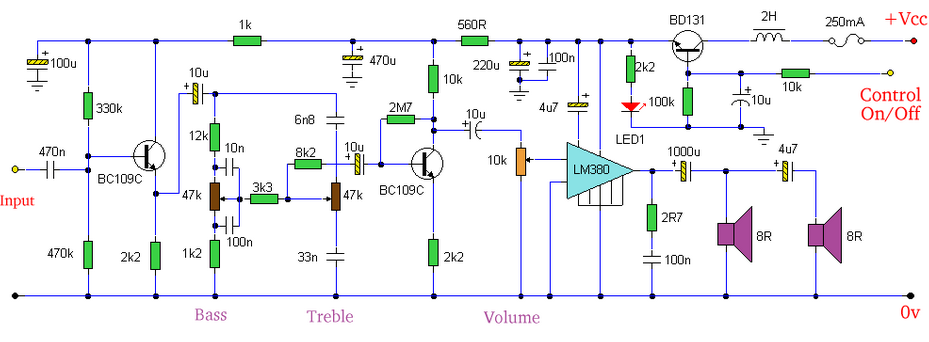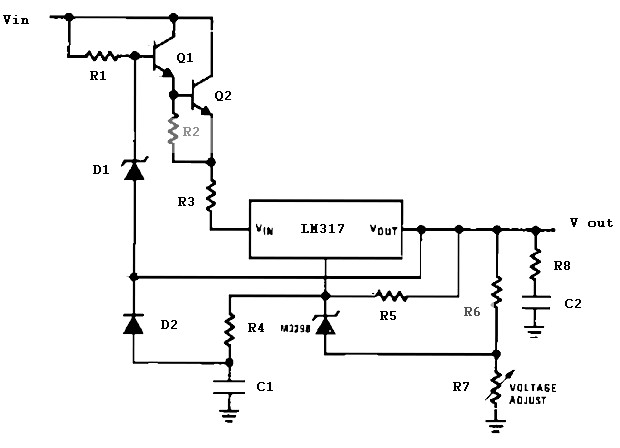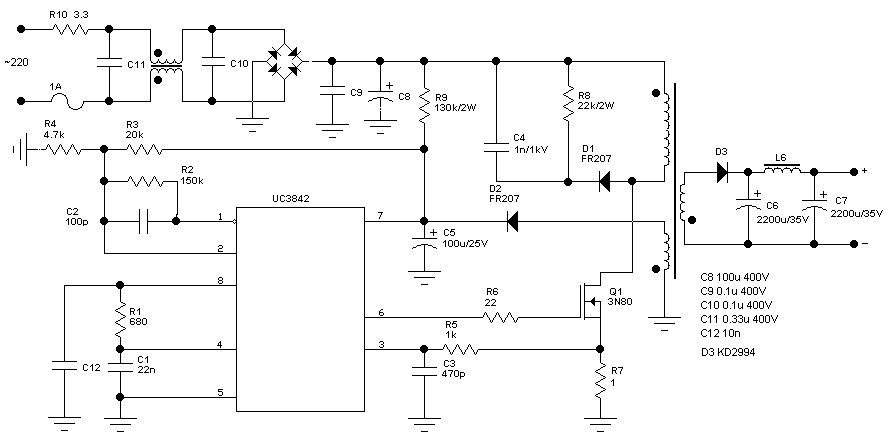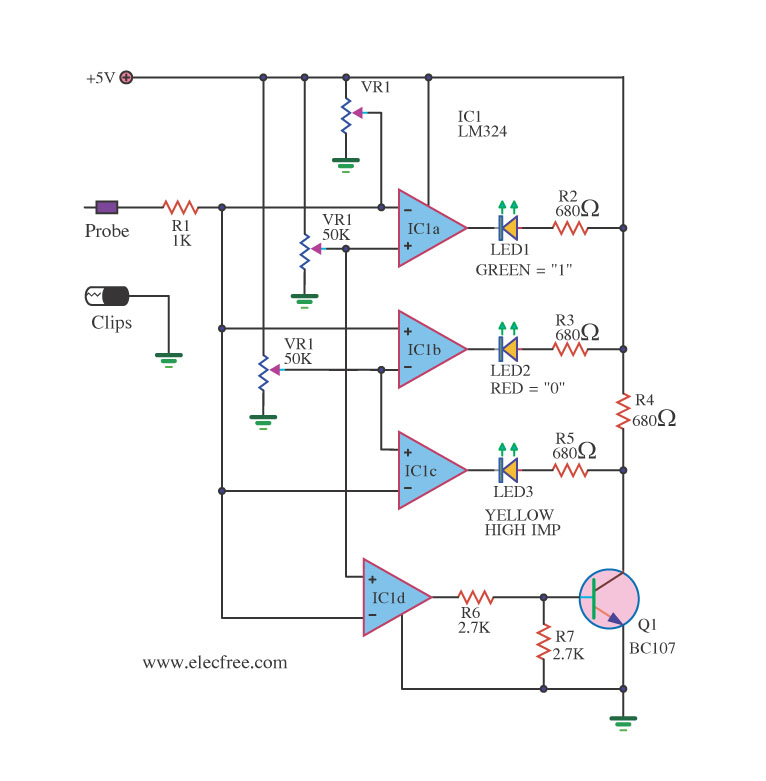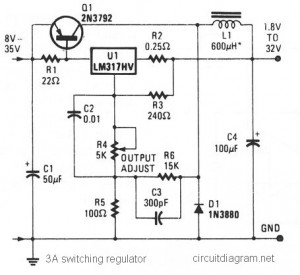
Isolation and zero voltage switching logic
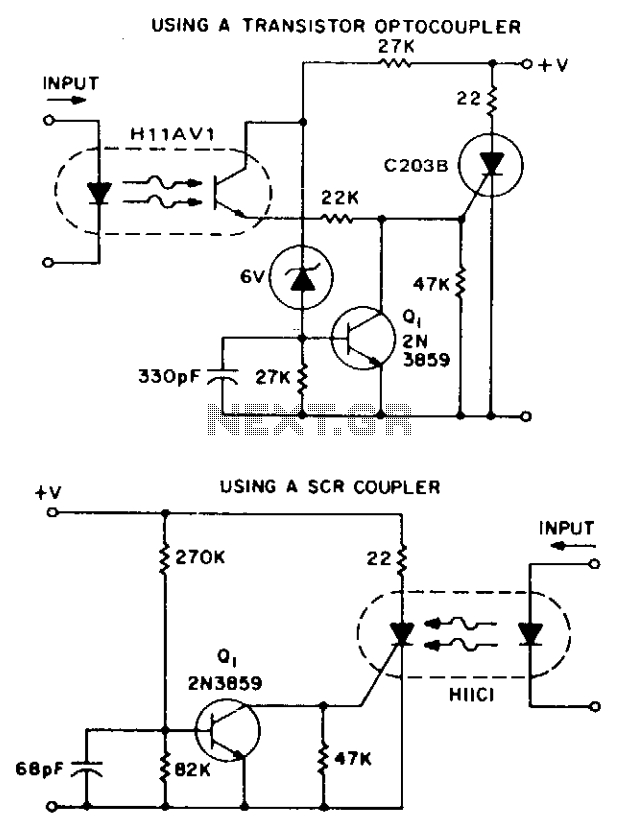
These two simple circuits provide zero voltage switching. They can be used with full wave bridges or in antiparallel to provide full wave control and are normally used to trigger power thyristors. If an input signal is present during the time the AC voltage is between 0 to 7 V, the SCR will turn on. However, if the AC voltage has risen above this range and the input signal is then applied, the transistor Q1 will be biased to the "on" state and will hold the SCR and, consequently, the relay off until the next zero crossing.
The described circuits implement zero voltage switching, a technique that enhances the efficiency and reliability of thyristor control in power applications. The circuits are designed to work with full wave bridge rectifiers or in an antiparallel configuration, allowing for effective full wave control of the load.
In operation, when the AC voltage is within the range of 0 to 7 V and an appropriate input signal is detected, the silicon-controlled rectifier (SCR) is triggered into the 'on' state. This is achieved through the application of a gate pulse that activates the SCR, allowing current to flow through the load. The SCR remains in this conducting state until the current through it drops below a certain threshold, typically at the next zero crossing of the AC waveform.
Conversely, if the AC voltage exceeds 7 V and an input signal is applied, the circuit behavior changes. The transistor Q1 is turned on, which prevents the SCR from conducting. This is due to the biasing of Q1, which effectively holds the SCR in the 'off' state, thereby ensuring that no current flows through the relay until the AC voltage returns to zero. This feature is crucial for preventing unintended triggering of the SCR during high voltage conditions, thus providing a protective function and ensuring stable operation of the circuit.
These circuits are particularly useful in applications where precise control of AC loads is required, such as in light dimmers, motor speed controllers, and other power electronics applications where efficiency and reliability are paramount. The zero voltage switching technique minimizes electrical noise and stress on the components, enhancing the longevity and performance of the overall system.These two simple circuits provide zero voltage switching. They can be used with full wave bridges or in antiparallel to provide full wave control and are normally used to trigger power thyristors. If an input signal is present during the time the ac voltage is between 0 to 7 V, the SCR will turn on.
But, if the ac voltage has risen above this range and the input signal is then applied, the transistor, Ql, will be biased to the "on" state and will hold the SCR and, consequently, the relay ' 'off' until the next zero crossing.
The described circuits implement zero voltage switching, a technique that enhances the efficiency and reliability of thyristor control in power applications. The circuits are designed to work with full wave bridge rectifiers or in an antiparallel configuration, allowing for effective full wave control of the load.
In operation, when the AC voltage is within the range of 0 to 7 V and an appropriate input signal is detected, the silicon-controlled rectifier (SCR) is triggered into the 'on' state. This is achieved through the application of a gate pulse that activates the SCR, allowing current to flow through the load. The SCR remains in this conducting state until the current through it drops below a certain threshold, typically at the next zero crossing of the AC waveform.
Conversely, if the AC voltage exceeds 7 V and an input signal is applied, the circuit behavior changes. The transistor Q1 is turned on, which prevents the SCR from conducting. This is due to the biasing of Q1, which effectively holds the SCR in the 'off' state, thereby ensuring that no current flows through the relay until the AC voltage returns to zero. This feature is crucial for preventing unintended triggering of the SCR during high voltage conditions, thus providing a protective function and ensuring stable operation of the circuit.
These circuits are particularly useful in applications where precise control of AC loads is required, such as in light dimmers, motor speed controllers, and other power electronics applications where efficiency and reliability are paramount. The zero voltage switching technique minimizes electrical noise and stress on the components, enhancing the longevity and performance of the overall system.These two simple circuits provide zero voltage switching. They can be used with full wave bridges or in antiparallel to provide full wave control and are normally used to trigger power thyristors. If an input signal is present during the time the ac voltage is between 0 to 7 V, the SCR will turn on.
But, if the ac voltage has risen above this range and the input signal is then applied, the transistor, Ql, will be biased to the "on" state and will hold the SCR and, consequently, the relay ' 'off' until the next zero crossing.

